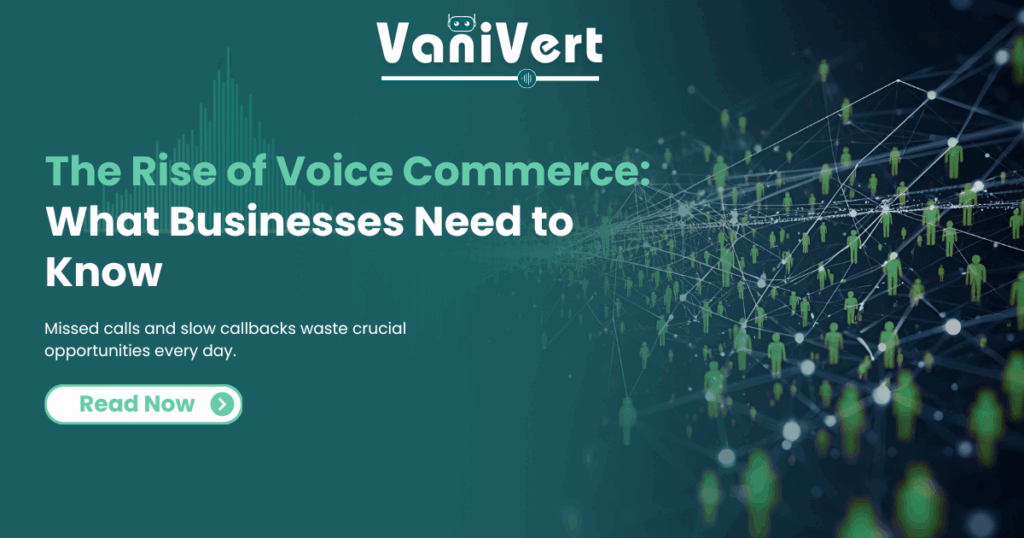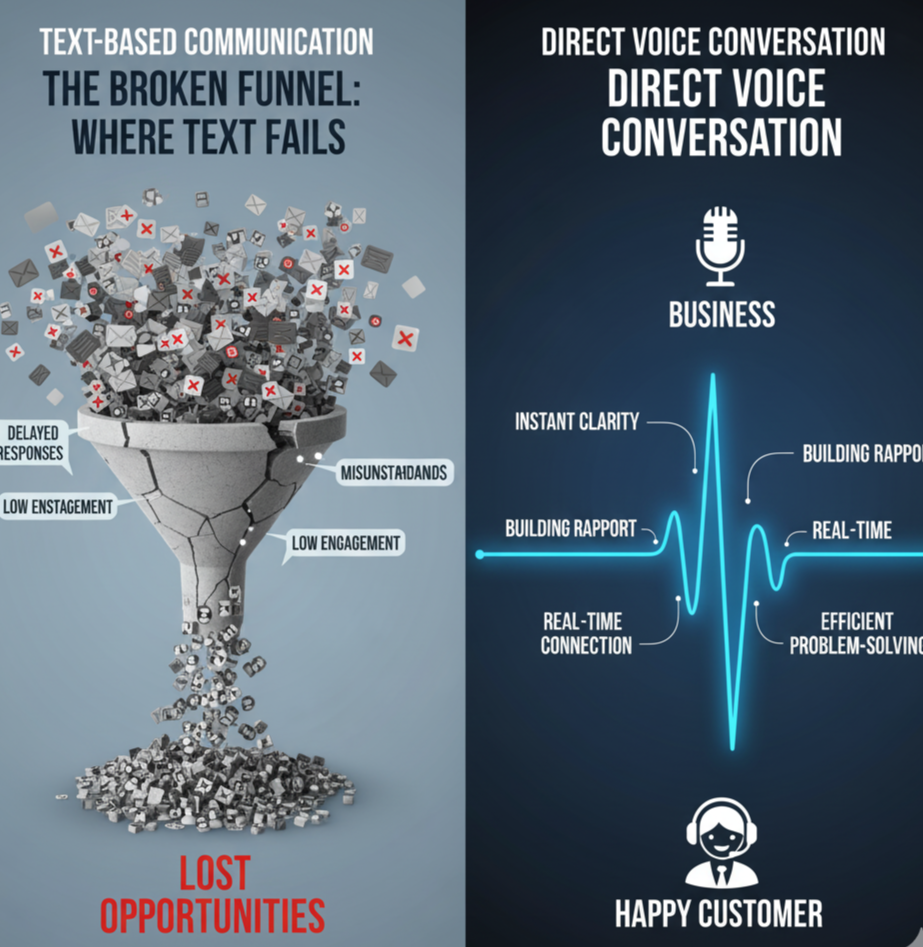
A decade ago, few could imagine that speaking to a device would become second nature. Today, we casually ask Alexa to reorder groceries, use Google Assistant to check bank balances, and dictate WhatsApp messages while driving. What began as a novelty is becoming a mainstream channel: voice commerce – the act of using voice-powered technologies to search, shop, and transact-is quietly transforming customer engagement.
In industries like e-commerce, BFSI, and real estate, voice commerce is no longer experimental; it’s shaping revenue pathways. E-commerce giants are reporting up to 30% higher conversion rates through voice-led search and interactions, while in BFSI, voice authentication and transactions are pushing convenience to the forefront. Yet, most brands are still playing catch-up, stuck in outdated models of customer communications that rely heavily on text-only interfaces and human call centers.
The analogy is clear: just as mobile apps disrupted websites 15 years ago, voice is now disrupting both apps and text. The urgency is real – customers demand speed, personalization, and language familiarity. Ignoring voice as a commerce channel isn’t just missing an opportunity, it’s losing relevance.
As enterprises think about the next growth lever, the question is no longer “Should we adopt voice commerce?” but “How fast can we build a voice-first strategy?”
The Broken Funnel: Where Text Fails

Customer engagement today resembles an overcrowded road. SMS promotions, email campaigns, and app notifications flood the user, yet click-through rates are stalling at under 2%. In e-commerce especially, cart abandonment remains above 65%.
Voice commerce offers a detour. Instead of waiting for a customer to read an SMS, an AI-powered voice agent can call immediately, answer questions, confirm orders, or nudge a purchase decision – all conversationally, in real time. This active engagement fixes the leaky funnel that textual nudges fail to close.
The Conversation Is the Transaction
In traditional commerce, the path from intent to purchase is filled with friction: search, filter, compare, click, and pay. Voice erases steps. A returning customer saying “Buy my regular detergent” completes the cycle without browsing.
For e-commerce businesses, this reflects a new framework: Intent → Conversation → Transaction. Call centers and offline agents once fulfilled this role, but they were expensive and inconsistent. With outbound calling automation powered by Voice AI, businesses can achieve the same conversational commerce-at scale, 24/7, and in multiple languages.
Multilingual Advantage: Winning Local Markets
India has over 22 official languages and hundreds of dialects. For BFSI, NBFCs, e-commerce, and logistics players, this linguistic diversity is both a barrier and a goldmine. A chatbot in English cracks only 10% of the market. A multilingual AI voice agent breaks this barrier by interacting fluently with customers in their preferred language.
Think of it as cricket commentary: when millions hear the game explained in their local language, the emotional connect strengthens. Similarly, voice commerce isn’t just about convenience; it’s about cultural resonance – a business speaking your language feels trustworthy.
Speed-to-Lead: The New Competitive Edge
In real estate and high-ticket purchases, lead qualification and response time define success. Studies show that leads contacted within 5 minutes are 9x more likely to convert than those contacted after an hour. Yet humans can’t scale this responsiveness, and basic CRMs can’t hold a conversation.
Here, inbound and outbound calling automation powered by Voice AI becomes a game-changer. An AI agent can instantly answer inbound queries, qualify prospects, set up property viewings, or even follow-up with undecided buyers. In industries where each lead represents lakhs in potential revenue, speed powered by Voice AI isn’t optional – it’s survival.
Voice as a Collection Muscle
In BFSI and NBFCs, collections remain one of the most people-heavy operations. Manual calling is labor-intensive, inconsistent, and often met with avoidance. Voice commerce reframes this: AI-led collections calls can be empathetic, multilingual, polite, and persistent – all while reducing cost-per-call by up to 70%.
Just as UPI simplified digital payments overnight, AI-powered voice commerce is streamlining the most challenging part of financial engagement: timely reminders and smoother collections.
Ecosystem Signals: Why This Shift Is Global
Globally, voice assistant adoption is projected to hit 8.4 billion devices by 2026 – surpassing the number of people on Earth. Markets like the US and China are already seeing $40+ billion in annual voice commerce by 2024. The same playbook is entering India: retailers, insurers, and ride-hailing apps are embedding voice-first experiences as a default.
Ignoring this isn’t just a missed opportunity; it’s playing yesterday’s game. As with e-commerce in 2010 or UPI in 2016, the winners will be the ones who embrace the inflection point early.
Metrics That Matter: From Vanity to Value
The success of voice commerce isn’t measured in app installs or impressions. It’s measured in:
- Conversion acceleration (closing leads faster).
- Collection efficiency (reducing cost-to-recovery).
- CSAT and NPS boosts (customers love being understood in their language).
- Operational savings (AI agents never sleep or churn).
Enterprises should resist vanity metrics and focus on these voice-first KPIs, aligning strategic outcomes with customer delight.
From Hype to Strategy
Voice commerce is not a fad – it’s a structural shift in how businesses will engage and transact. Just as websites became non-negotiable in the 2000s and apps in the 2010s, voice will be the winning frontier of the 2020s.
But adopting voice commerce isn’t about chasing hype. It’s about strategically embedding Voice AI-powered inbound and outbound calling automation to solve real pain points: lead qualification, appointment booking, collections follow-ups, and customer reception.
Conclusion: The Next Conversation Leaders Must Own
Voice commerce is not about replacing people; it’s about scaling conversations businesses could never afford to have at human cost. With multilingual AI voice agents, enterprises can unlock new revenue, reduce operational burden, and delight customers at a scale impossible before.
VaniVert.ai is at the forefront of this shift, helping BFSI, e-commerce, logistics, real estate players and businesses at large transform conversation into commerce. The next frontier belongs to businesses ready to design with voice at the center – not the periphery.
For leaders, the takeaway is simple: voice is not the future – it’s the present. The question is whether your business is speaking the language your customers are already listening for.
Discover how VaniVert can help you streamline voice-first engagement and commerce, at scale.

